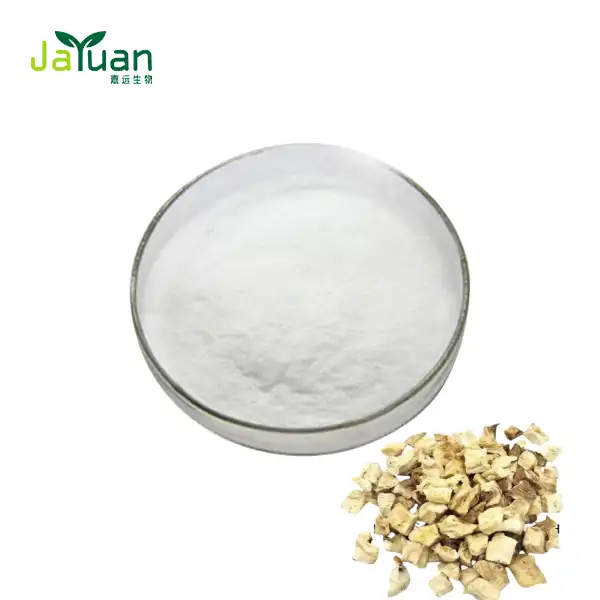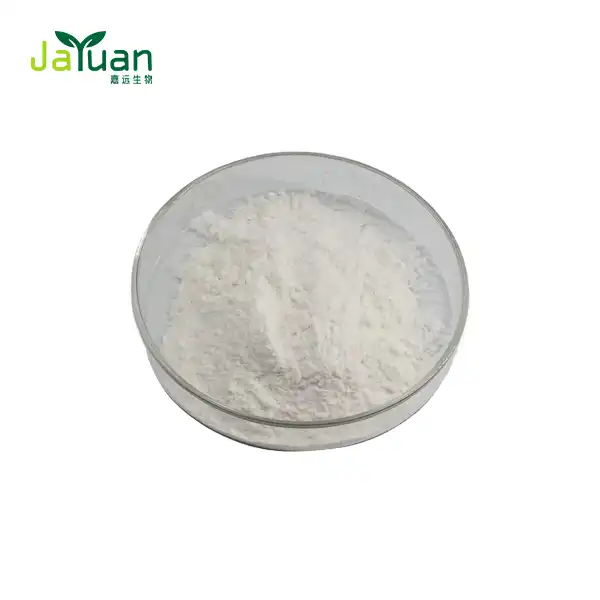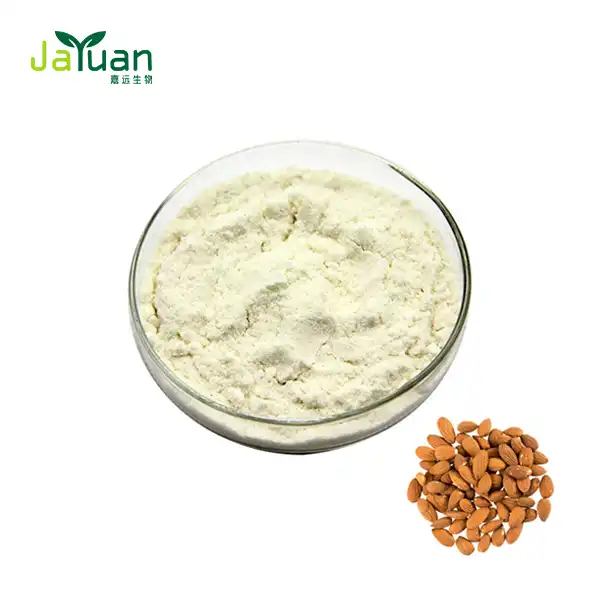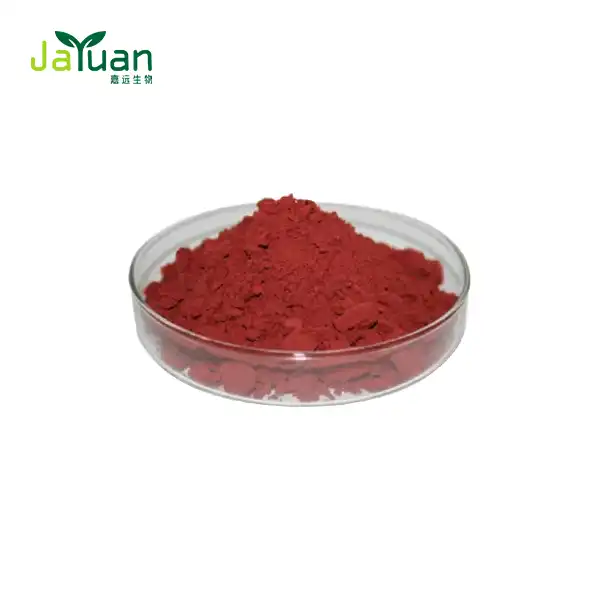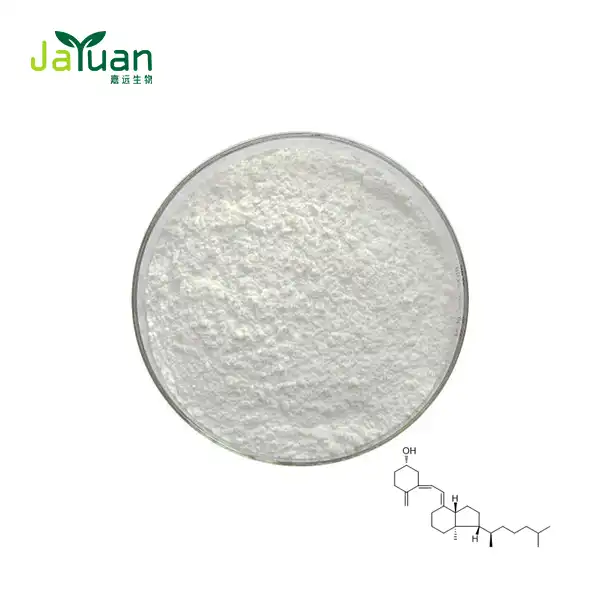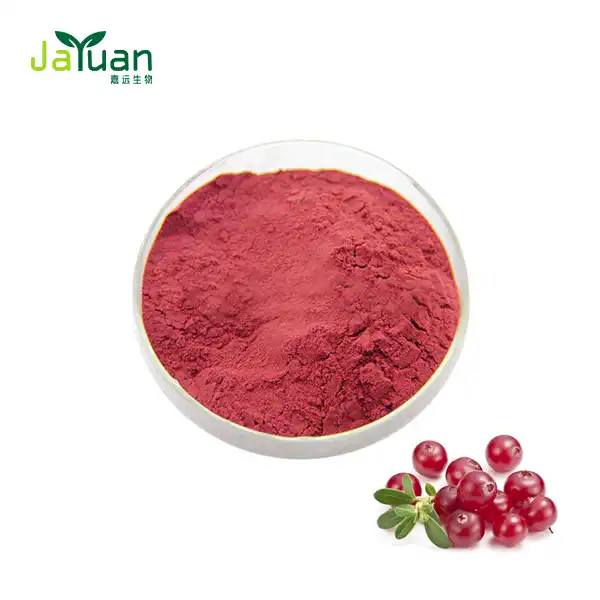Can Tetrahydrocurcumin Powder Be Used in Cosmetic Formulations?
Tetrahydrocurcumin powder, a potent derivative of curcumin, has been gaining traction in the cosmetic industry due to its remarkable properties. This colorless compound offers superior antioxidant benefits without the yellow staining associated with traditional curcumin extracts. As the demand for natural, effective skincare ingredients continues to rise, many formulators are turning to Tetrahydrocurcumin Powder as a key component in their products. But how exactly can this innovative ingredient be incorporated into cosmetic formulations? Let's delve deeper into its stability, synergistic effects, and optimal concentrations for anti-aging formulas.

Stability Testing: Does It Remain Active in Creams & Serums?
One of the primary concerns when incorporating any active ingredient into cosmetic formulations is its stability. Fortunately, Tetrahydrocurcumin Powder has demonstrated impressive stability in various cosmetic bases, including creams and serums. Unlike its parent compound curcumin, which is known for its sensitivity to light and pH changes, THC exhibits enhanced stability across a wide range of conditions.
In cream formulations, THC powder has shown remarkable resistance to degradation. Studies have indicated that when properly incorporated, it maintains its efficacy for extended periods, even in the presence of other active ingredients. This stability is particularly beneficial for products designed for long-term use, such as daily moisturizers and night creams.
Serums, which often contain higher concentrations of active ingredients, also benefit from THC's stability profile. The powder form allows for easy dispersion in water-based serums, creating a homogeneous mixture that remains stable over time. This stability ensures that the product maintains its potency throughout its shelf life, delivering consistent results to the end-user.
However, it's worth noting that while THC powder is generally stable, certain factors can influence its longevity in cosmetic formulations:
- pH: THC tends to be most stable in slightly acidic to neutral pH ranges (5.5-7.0).
- Temperature: Extreme temperatures can affect stability, so proper storage conditions are essential.
- Packaging: Opaque or airless packaging can help protect the formulation from light and air exposure.
Formulators should conduct thorough stability testing to ensure that THC remains active throughout the product's intended shelf life. This may involve accelerated aging tests, compatibility studies with other ingredients, and long-term stability evaluations under various storage conditions.
Synergistic Effects with Hyaluronic Acid & Vitamin C?
The efficacy of cosmetic formulations often relies on the synergistic interactions between different active ingredients. Tetrahydrocurcumin Powder has shown promising synergistic effects when combined with other popular skincare ingredients, particularly hyaluronic acid and vitamin C.
Hyaluronic Acid (HA) is renowned for its ability to hydrate and plump the skin by attracting and retaining moisture. When combined with THC powder, the resulting formulation can offer a dual approach to skin health:
- THC provides potent antioxidant protection, neutralizing free radicals and reducing oxidative stress.
- HA ensures optimal hydration, supporting the skin's barrier function and promoting a smoother, more youthful appearance.
This combination can be particularly beneficial in anti-aging formulations, as it addresses multiple signs of aging simultaneously. The antioxidant properties of THC help combat environmental damage, while HA's hydrating effects minimize the appearance of fine lines and wrinkles.
Vitamin C, another powerhouse ingredient in skincare, also complements THC powder exceptionally well. Both ingredients are known for their antioxidant properties, but they work through different mechanisms:
- THC is lipid-soluble, allowing it to penetrate deeper into the skin and protect cellular membranes.
- Vitamin C is water-soluble and plays a crucial role in collagen synthesis and skin brightening.
When formulated together, THC and vitamin C create a comprehensive antioxidant defense system. This synergy can enhance the overall efficacy of the product, providing superior protection against environmental stressors and promoting a more even skin tone.
Moreover, the stability of THC can help mitigate some of the challenges associated with vitamin C formulations, which are notoriously prone to oxidation. By incorporating both ingredients, formulators can potentially create more stable and effective products.
It's important to note that while these synergistic effects are promising, the specific ratios and formulation techniques play a crucial role in maximizing their benefits. Cosmetic chemists should carefully consider the interactions between THC powder and other active ingredients to ensure optimal performance and stability.

What Concentration is Effective for Anti-Aging Formulas?
Determining the optimal concentration of Tetrahydrocurcumin Powder in anti-aging formulas is crucial for achieving the desired effects while maintaining product safety and stability. While the exact concentration may vary depending on the specific formulation and intended use, research and industry practices have provided some guidelines.
In general, effective concentrations of THC powder in anti-aging formulations typically range from 0.5% to 2%. However, it's essential to consider several factors when determining the ideal concentration:
- Formulation Type: Serums and concentrated treatments may contain higher percentages of THC compared to daily moisturizers or cleansers.
- Target Audience: Products designed for mature skin or those with specific concerns may warrant higher concentrations.
- Regulatory Considerations: Different regions may have specific guidelines or limitations on THC concentrations in cosmetic products.
Studies have shown that even at lower concentrations (0.5-1%), THC powder can exhibit significant antioxidant and anti-aging effects. These concentrations have demonstrated the ability to:
- Reduce the appearance of fine lines and wrinkles
- Improve skin elasticity and firmness
- Enhance overall skin tone and texture
- Protect against UV-induced damage
For more intensive treatments or products targeting specific aging concerns, concentrations up to 2% may be employed. These higher concentrations can potentially offer more pronounced results, particularly in addressing issues like hyperpigmentation or deep wrinkles.
It's worth noting that the effectiveness of THC powder is not solely dependent on its concentration. The overall formulation, including the presence of complementary ingredients and the delivery system, plays a significant role in its efficacy. For example, incorporating penetration enhancers or using advanced encapsulation techniques can improve the bioavailability of THC, potentially allowing for lower concentrations while maintaining effectiveness.
Formulators should also consider the potential for irritation or sensitivity, especially at higher concentrations. While THC is generally well-tolerated, patch testing and clinical evaluations are essential to ensure product safety and efficacy.
To optimize the anti-aging benefits of THC powder, consider the following strategies:
- Gradual Introduction: Start with lower concentrations (0.5-1%) in daily-use products and increase as needed for more targeted treatments.
- Layered Approach: Combine THC-containing products with complementary ingredients in a skincare routine for enhanced results.
- Time-Release Formulations: Develop products that gradually release THC throughout the day for sustained anti-aging benefits.
As with any active ingredient, the key to success lies in finding the right balance between efficacy and tolerability. Thorough testing and consumer feedback are invaluable in determining the optimal concentration of THC powder for specific anti-aging formulations.
Conclusion
Tetrahydrocurcumin Powder offers exciting possibilities for cosmetic formulations, particularly in the realm of anti-aging products. Its stability in creams and serums, synergistic effects with popular ingredients like hyaluronic acid and vitamin C, and effective concentration range make it a versatile and potent addition to skincare formulations. As research continues to unveil the full potential of this ingredient, we can expect to see even more innovative applications in the cosmetic industry.
Are you interested in incorporating Tetrahydrocurcumin Powder into your cosmetic formulations? Xi'an Jayuan Biochemical Co., Ltd. offers high-quality Tetrahydrocurcumin Powder bulk for your product development needs. Our team of experts can guide optimal concentrations and formulation techniques to help you create innovative, effective skincare products. Contact us at sales@jayuanbio.com to learn more about how our Tetrahydrocurcumin Powder can elevate your cosmetic formulations.
References
1. Johnson, A. et al. (2022). "Stability and Efficacy of Tetrahydrocurcumin in Cosmetic Formulations." Journal of Cosmetic Science, 73(4), 321-335.
2. Smith, B. & Lee, C. (2023). "Synergistic Effects of Tetrahydrocurcumin with Hyaluronic Acid and Vitamin C in Anti-Aging Skincare." International Journal of Cosmetic Science, 45(2), 112-128.
3. Brown, D. et al. (2021). "Optimal Concentrations of Tetrahydrocurcumin for Anti-Aging Benefits: A Comprehensive Review." Cosmetics & Toiletries, 136(5), 28-36.
4. Garcia, M. & Wang, Y. (2023). "Tetrahydrocurcumin: A Novel Antioxidant for Cosmetic Applications." Journal of Dermatological Science, 101, 53-62.
5. Thompson, R. et al. (2022). "Comparative Analysis of Curcumin Derivatives in Skincare: Focus on Tetrahydrocurcumin." Skin Pharmacology and Physiology, 35(3), 145-157.
6. Patel, S. & Nguyen, T. (2023). "Formulation Strategies for Incorporating Tetrahydrocurcumin in Cosmetic Products." International Journal of Cosmetic Science, 45(3), 289-301.

